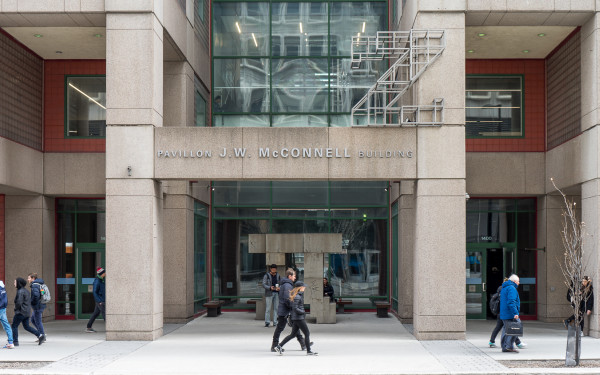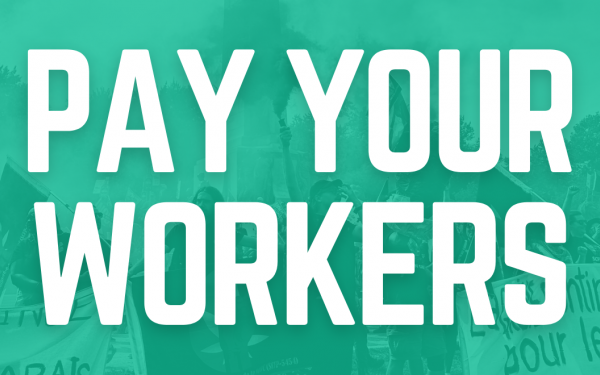Quebec’s COVID economy: An advantage for larger industries
Quebec’s biggest industrial sectors flourish in the midst of a global crisis
Although certain sectors of Quebec’s economy remain battered from the pandemic, many were able not only to survive, but to become stronger.
Each of the following industries, through their size, savvy, and indispensable natures, emerged from the pandemic stronger than ever.
Insurance
According to Canadian Underwriter, the insurance industry’s net income grew by 54.73 per cent last year, expanding from about $3.9 billion in 2019 to $6 billion in 2020.
Certain claims, like those related to accidents or car trouble, decreased, but premiums have stayed the same or increased. This means that companies have paid out less money, while collecting the same profits.
When it came to types of insurance where the risk of payout was higher, so were the prices. Health and property claims rose, but insurance companies hiked their premiums, keeping them from losing money as victims of the pandemic demanded their due.
The insurance industry is diverse, and rare are the companies that specialize exclusively in only one type of insurance. Thus, the profitable divisions of companies can help the struggling ones stay afloat.
In a context where people are at an increased risk of losing their jobs, health, or businesses, insurance is an essential service. Thus, companies can very confidently extract more money from their consumers. Although customers can and do complain, they still have to buy the product.
Telecom
Although reporting lower profits during the pandemic, Canada's telecom giants have all benefited from advantageous government stipends and favourable legislation. In 2021, most are performing at full capacity. In fact, Canada’s Big Three—Bell Media, Rogers, and Telus—all report significant growth.
Currently, the profit margins for Canadian cell phone plans are among the highest in the world. Around 40 per cent of a Canadian’s phone bill goes straight to the company. In most countries, that percentage is closer to 20.
These margins come on top of already heightened prices. Because Canada has a very low population density over such a large land mass, building infrastructure in many of the country’s more remote areas is an expensive endeavor.
During the pandemic, the government has decided to address the problem by heavily investing in infrastructure, essentially helping telecom companies reach new consumer segments that might have previously been too expensive to invest in.
The government has allocated close to $7 billion, entrusting Canada’s largest telecom companies with bridging this rural-urban gap.
Although most of Canada’s population lives in cities, many people in remote areas, such as Indigeneous communities or farmers, are neglected when it comes to internet and cell service. Notably, the Yukon has the slowest internet download speeds in the country, while also paying much more than anyone in the major cities. For comparison, a Montreal resident can get an unlimited internet package for around $60, while a similar package would cost about three times that amount for a Yukoner.
Banks
Banks have also reported growth since the start of the pandemic. Given that Canada's top five businesses are banks or financial firms, it’s no surprise that the sector was quick to recover, now five per cent bigger than it was in February 2020.
The government also instituted the insured mortgage purchase program, which helped struggling Canadians pay back their loans. “Government programs really helped people and businesses keep their heads above water,” said Hélène Bégin, an economist for Desjardins. “We actually saw bankruptcies go down.”
Although banks report that more customers were trying to take out loans and defer payments, they report higher profits, notably at the cost of mass layoffs in the pandemic's early days.
Real estate
Sales, demand, and prices have continued to soar. This trend precedes the pandemic, but has been heavily exacerbated by it.
Montreal’s vacancy rate currently sits at a stark 2.1 per cent, on par with similar situations in Toronto and Vancouver.
In Montreal, rental prices have risen for both industrial and residential spaces. However, the real estate market outside of the city has also seen a boom.
People who were able to work from home are likely to make more money than those who don't. “A lot of people actually managed to save money,” said Bégin.
Many decided to move, or purchase another home, driving up sales in the suburbs. Further out, Quebec's regions have also seen a spike of Montrealers involved in their real estate markets.
The injection of more homes into the market has also stagnated. As demand for housing increased during the pandemic, people were willing to pay much more than usual. “Poor management of demand led to an accelerated surge in prices,” wrote the Quebec Professional Association of Real Estate Brokers in a recent report.
Construction
The pandemic has been seen by some as a time to catch up to Quebec’s housing deficit, and the industry is thriving. 2020 was the sector's best year since 2014.
In fact, 2020 saw the most new home builds being started in Quebec since the 1980s.
Notably, Mayor Valérie Plante has also committed to building more social housing. In one measure, the city would force developers to include social housing in any new construction project over a certain size lest they face a fine. Whether the program would apply Montreal-wide is undecided. In a separate measure, almost $80 million has also been allocated to building new affordable housing.
However, obstacles such as rising construction prices and the current labour shortages have caused significant delays in both the public and private sectors. The construction industry is doing well, but customers may have to wait to reap the rewards.
This article originally appeared in The Money Issue, published November 2, 2021.

.png)
_600_832_s.png)




